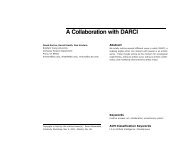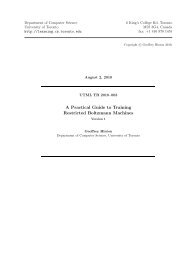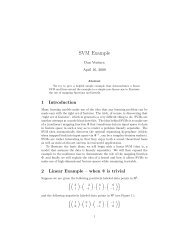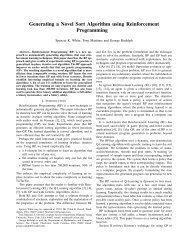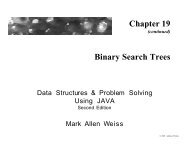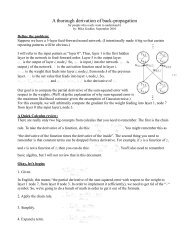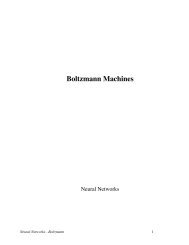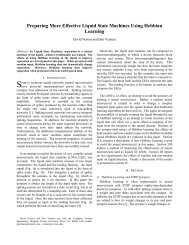A Bradley-Terry Artificial Neural Network Model for Individual ...
A Bradley-Terry Artificial Neural Network Model for Individual ...
A Bradley-Terry Artificial Neural Network Model for Individual ...
You also want an ePaper? Increase the reach of your titles
YUMPU automatically turns print PDFs into web optimized ePapers that Google loves.
An ANN <strong>Model</strong> For <strong>Individual</strong> Ratings in Group Competitions 5<br />
(<strong>Bradley</strong> & <strong>Terry</strong>, 1952; Davidson & Farquhar, 1976; David, 1988; Hunter,<br />
2004). This paper differs from previous research in two ways. First, it proposes<br />
a method to determine individual ratings and rankings when the subjects<br />
being compared are groups. (Huang et al., 2005) proposed a similar<br />
extension, however their method of fitting the model assumes that “each<br />
individual <strong>for</strong>ms a winning or losing team in some competitions which together<br />
involve all subjects” In situations involving thousands of players on<br />
teams that may never compete against each other, their method is not guaranteed<br />
to converge. In addition, they could not prove the method of fitting<br />
would converge to the global minimum. The following method, however, will<br />
always converge to the global minimum because it is an ANN trained with<br />
the delta rule—a method whose convergence properties are well-known. Perhaps<br />
more importantly, the model proposed by (Huang et al., 2005) fits each<br />
parameter simultaneously, which is both impractical when the amount of<br />
competitions and individuals is large, and undesirable if the model needs to<br />
be updated after every competition. This is because new individuals may<br />
enter the model at any point, and there<strong>for</strong>e it is impossible to know when<br />
to stop and fit all the individual parameters. This leads to the second additional<br />
contribution of this paper.<br />
The more common methods <strong>for</strong> fitting a <strong>Bradley</strong>-<strong>Terry</strong> model require<br />
that all of the comparisons to be considered involving all of the competitors<br />
have already taken place so the model can be fit simultaneously. While this<br />
can be more theoretically accurate, it is intractable in situations involving



